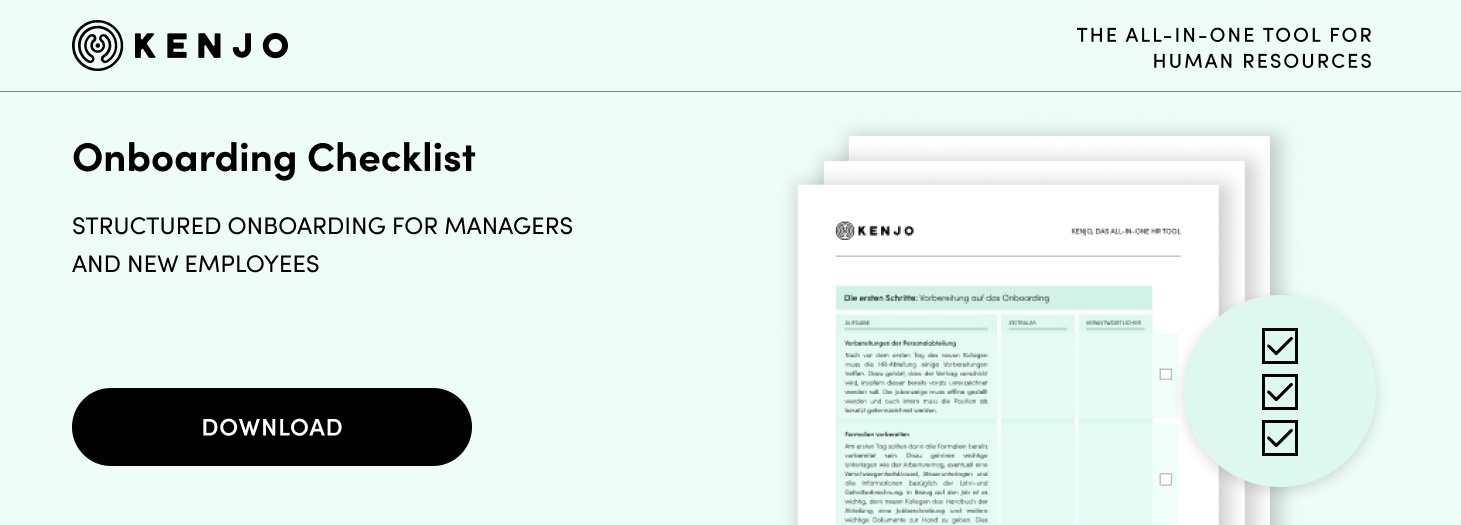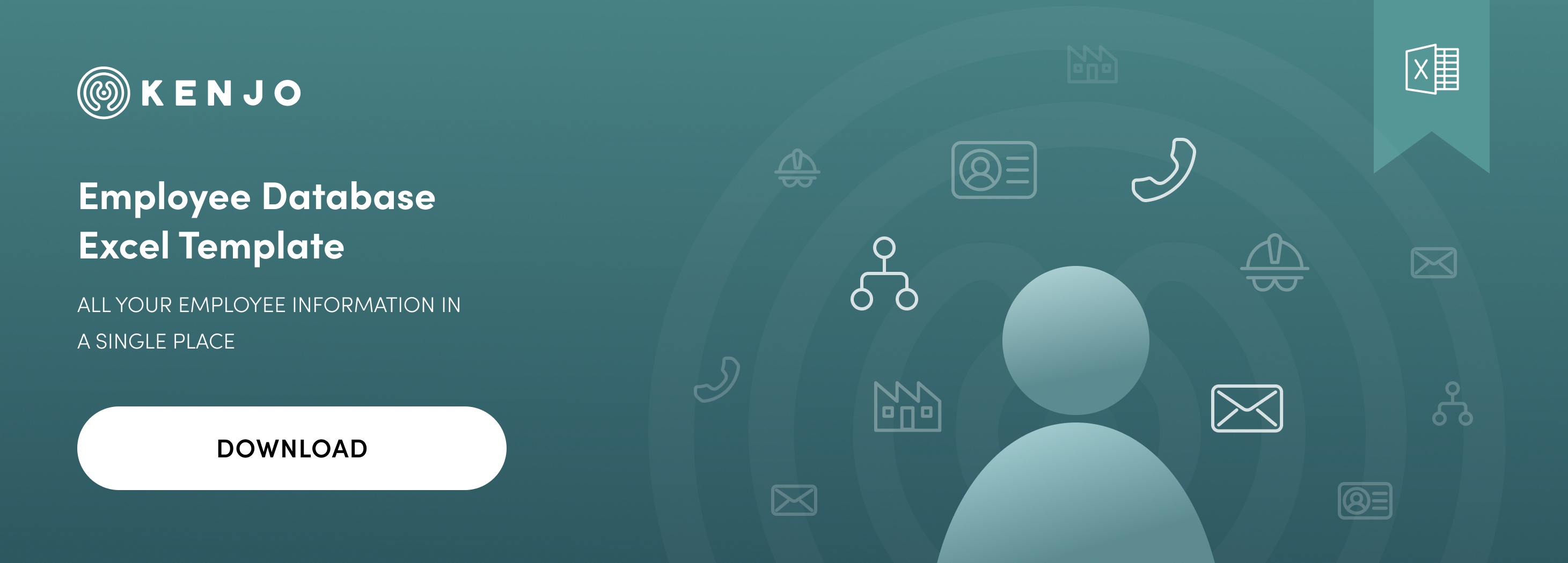Everything you need to know about Employee Onboarding (+ free Onboarding Checklist)

Employee satisfaction is playing an ever increasing role in when it comes to talent retention. But how do you actually make employees feel good? The first step to employee satisfaction is a structured onboarding process that familiarizes new employees with the company, their job their duties and team. The process starts from the moment the employee is made an offer and ends once the employee is a productive member of the company.
But what does a good employee onboarding process look like, what pitfalls do you need to avoid and how do you build a structure onboarding process? We've created this detailed article to answer these and many more questions about the onboarding process and even included a free onboarding checklist for you to download.
What is the definition of onboarding?
Onboarding is an HR term that refers to the process of introducing a newly hired employee to a company. Onboarding helps employees understand their new position and job requirements and integrate seamlessly into the organization. The onboarding process includes many activities, from the first day welcome to the initial training sessions. Onboarding can last from a few weeks to a year, but typically goes on for at least a few months. Ideally, after onboarding, employees feel confident, competent and ready to fill the new position.
As part of onboarding, new employees receive training and information to help them settle into their new position. This helps them understand their role, the employer's expectations and the company culture.
Onboarding is a critical time for new employees, and not every supervisor has the capacity to train their employees individually and efficiently. Supervisors who are short on time should consider using an onboarding software to help their new employees to integrate into the company and be as productive as they can be. A digital onboarding software greatly helps in reducing unnecessary paperwork and enables HR Departments and Managers to create structured and synchronized workflows.
Why is employee onboarding important?
Onboarding, just like an employee offboarding, is important because it acclimates employees to their role, the company's philosophy, and their role in the company. The process also immediately engages new employees in their new work environment and ensures that they are committed to the success of the company. In addition, onboarding directly engages new employees with the company by making them feel like they are part of the team.
Without a proper onboarding process, employee turnover increases and productivity decreases. Low employee engagement costs companies a lot of money every year. But if your employees are engaged, they are less likely to leave your company. When a company has a good onboarding process, employees tend to stay with the company longer.
For a better overview, here's a list of reasons why employee onboarding is important:
- Lower employee turnover
- Higher productivity
- Better integration into the team
- Sense of belonging to the company
- Quick integration into the new working environment
- Understanding of the company philosophy
- Direct commitment to the success of the company
- Bonding with the company
Free Onboarding Checklist
In order to help you create and carry out a perfect onboarding for your company, we've created a free onboarding checklist which will guide you through the most important employee onboarding steps. You are also more than welcome to adjust the onboarding checklist and adapt it to your specific needs.
What is the goal of onboarding?
The onboarding process is important for both the company and the new employee, as it minimizes hiring costs in addition to improving employee retention. Furthermore, a well-organized onboarding process ensures that the new employee can contribute effectively in his or her new role. This entails connecting him early on with internal and external stakeholders who will help them perform their duties. In addition, they should receive job-specific training and participate in orientation programs.
Onboarding should also increase the employee's comfort level with the team and the workplace. You, as the HR Manager / Department Manager, need to introduce the new employee to their colleagues so they can discuss their individual roles and how they will work together. Additionally, onboarding should encourage employee engagement and commitment. New employees bring fresh ideas, new perspectives and different work experiences to their new roles. Leverage these insights. An effective onboarding process shows appreciation for new employees and demonstrates that the company is invested in employee success.
How long does an onboarding take?
According to one survey, most companies spend only one to two weeks on their employee onboarding program, which is a big mistake. Onboarding that is too short leads to poor employee retention, dissatisfaction among employees and even a toxic work environment that can put strain the existing team.
The general consensus among HR professionals is that an onboarding should last at least three months. However, research shows that companies can increase employee retention if they extend the onboarding process throughout an employee's entire first year.
In general, however, the onboarding process should last at least three months, as HR professionals and hiring managers agree that this is the minimum amount of time to onboard new employees. Only after about 12 weeks does the new employee feel ready to fully master the demands of his or her new job and feel integrated into the new team.
How to structure an employee onboarding
The entire onboarding process is divided into several phases that can be worked through chronologically to ensure a comprehensive onboarding. The contents of the individual phases are partly congruent with our checklist for a smooth onboarding. We've summarized the most important phases for you below:
The first steps: preparing for the onboarding
- Background Check: For some jobs, it is necessary to do a thorough background check before starting employment, as for some jobs it is essential to show specific certifications or to prove that no criminal record exists.
- Create an e-mail account: Before a new employee even starts, all accounts and accesses should be created so that they can start working right away. To do this, consult with the appropriate IT or Security Managers.
- Employee database: In order for the new employee to be able to perform his or her activities, they need to be added into the employe database. This guarantees not only a smooth workflow, but also the inclusion of the person in all HR processes. If you do not have an employee database, download our free employe database template.
- Devices and Tools: Nothing is more unpleasant than for new employees to find themselves without the necessary uniform, safety equipment, tools or company laptop on the first day. Consider what equipment is needed on the first day or week and what needs to be procured in advance.
- Keycards and Access: To ensure that the new employee has access to all areas that are important for his or her work, key cards, access codes or smart cards must be provided on the first day of work.
The orientation phase: The first days on the job
-
Send a welcome email to the new hire: By sending a welcome email, new employees will feel seen and valued. Emphasize in the email how important each employee is to the success of the company and how happy you are as a manager to welcome the new employee on board.
- Set up the workspace: Ensure that your new hire has a clean desk and chair, as well as any other equipment or accessories that they might need. If your company is in the manufacturing industry, ensure that the working area, workbench or manufacturing line has all the essentials the employee needs to perform their job satisfactorily.
- Tour the office: If your company has an office or production site, take your need employee on a tour of the facility and introduce them to the key people in each department. Give them an overview of the building so they can easily find their way around. Show them where the restrooms, break rooms and other common areas are located. This is also a good time to give your new employee the access key or code and explain the security protocols.
- Introduce the new employee: Welcome the new employee to the team by sending an email. Let all your co-workers know what position the new employee will hold. This announcement should encourage other team members to greet the new employee in person when they meet him or her at the office. In addition, invite the employee to lunch with the team on the first day so that he or she can make first personal contacts, settle into the company and feel welcome from the first day.
- Assign a mentor: Mentoring involves matching new hires with an authority figure within the company who acts as a role model. The mentor trains the new employee by passing on his or her knowledge. In this way, the new colleague is in good hands from the start.
Integration into the new working world: The first three months
- Schedule time for onboarding feedback: To continuously improve the onboarding process, you should allow time for the new employee to reflect on the process and provide you with specific feedback. This way you can continuously improve onboarding and update the process.
- Obtain feedback on a regular basis: Schedule time to meet with the new employee at regular intervals. At these meetings, the employee should have the opportunity to share any concerns or feedback and discuss how they are adjusting to their role.
The most common onboarding activities
The above outlined onboarding process isn't exhaustive, meaning that it can and should be customized and adapted to best fit your companies needs and culture. To give you some inspiration what you could include in your (digital) onboarding process, we've compiled a short list bellow:
- Job offers
- Salary negotiation
- New hire questionnaires
- Policy and culture training
- Job training
- Company Merchandise
- Employee handbook introduction
- Benefits paperwork/introduction
- Facility tours
- New hire lunch
- Team introductions
- Social Media Announcements
- Onboarding Surveys
The perfect employee onboarding with Kenjo
You don't get a second chance for first impressions, so you should ensure a smooth employee onboarding with a simple and intuitive onboarding software. With Kenjo, you can organize effective employee onboardings, save time, set and follow standardized processes.
Our software takes care of all onboarding tasks: Customized welcome emails ensure a good impression. New employees can upload their personal information in our app . Automatically generated org charts illustrate the new employee's position in the company, and automated notifications keep them in the loop. Try Kenjo today for free and see how our digital onboarding software can streamline your HR workflows.


